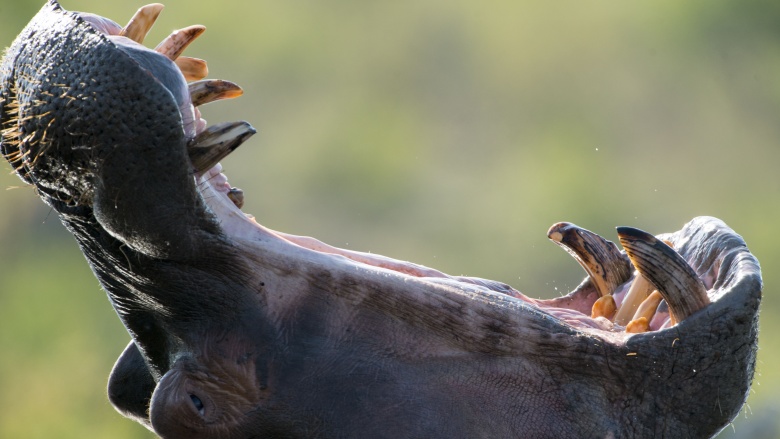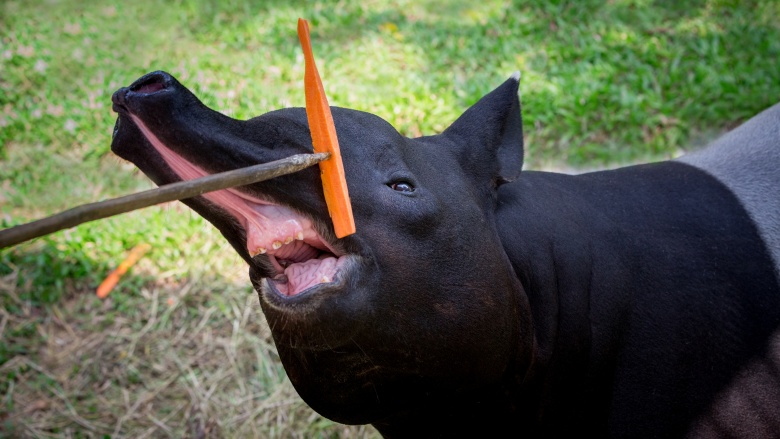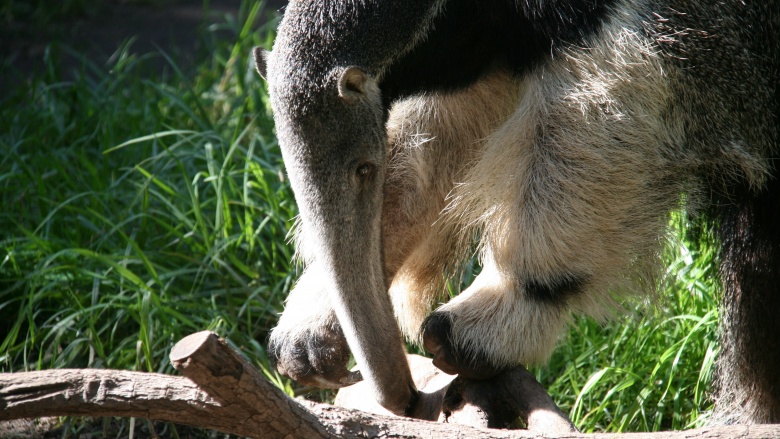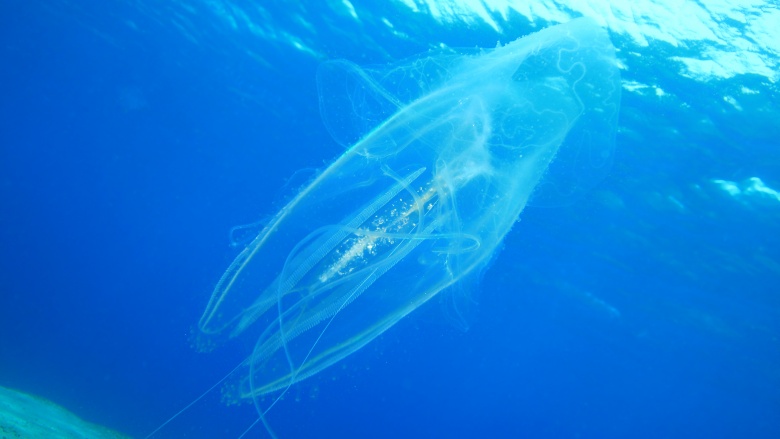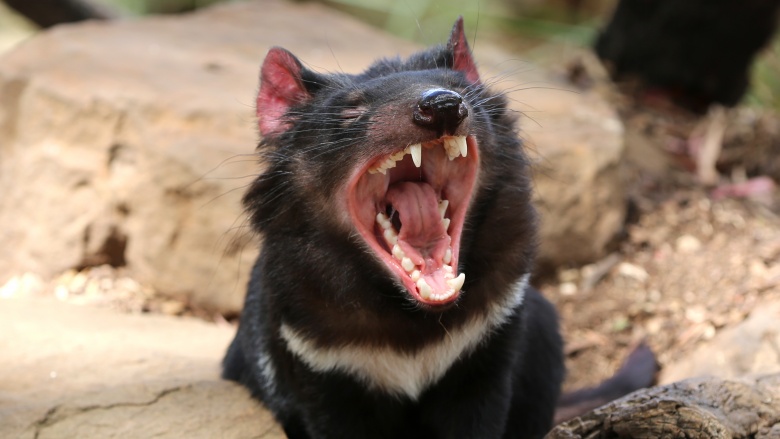Real Creatures That Deserve Their Own Horror Movies
Director Steven Spielberg's classic movie, Jaws, broke box office records after Universal released it in 1975. During the intervening years, and up until present day, seemingly every major studio and low-budget production company has glommed onto the killer animal trend. A casual perusal of your local Redbox will reveal a litany of titles featuring man-hating monsters, including ravenous pythons, giant spiders, and all manner of killer fish (either traveling via tornado or possessing multiple heads). We feel that the arachnid-reptile-shark paradigm has grown stale. Our solution is to shake up the formula a bit with some new, natural menaces. Below are some real-world animals that we feel these production companies have neglected.
Please note that we're being tongue-in-cheek here. Many of these animals are endangered or threatened, and deserve your respect and support. Along with a Hollywood contract.
Hippopotamus
Hippopotamuses are the world's third-largest land mammal, behind elephants and rhinoceroses. At first glance, these semi-aquatic giants appear to be innocuous, blubbery potatoes with legs. Their appearance belies the fact that their extremely territorial nature makes them the most dangerous mammal in Africa, according to National Geographic. They can inflict mortal wounds with their near-20-inch-long canine teeth. They are surprisingly fast on land, too. An average hippo can match a human being's running speed in short distances. Our North American readers will be glad to hear that, as told by Wired, a strange plan to introduce hippos to Louisiana in the early 20th century failed to pass in Congress.
Hippos are perfect for horror movies because you don't have to change a thing. Huge, fast, incredibly strong, sporting giant teeth, and almost always angry, they're already terrifying as is. Pygmy hippos, on the other hand? They're Disney levels of adorable, and we're petitioning Congress to bring them in right now.
Tapir
Tapirs are large land mammals native to South America and Asia. They may look like pigs, but tapirs are actually more closely related to horses and rhinoceroses. Their most notable feature is a small, prehensile trunk similar to that of an elephant. Tapirs are largely gentle, herbivorous creatures, but can inflict serious damage to a human with their powerful bite. Most notably, as reported by Scientific American, in 1998 a tapir at the Oklahoma Zoo bit a zookeeper's arm off! Another attack happened at the Dublin Zoo in 2013, when an irresponsible parent took her two-year-old daughter into the tapir enclosure. Pro parent tip: never, ever do that.
In both instances, the tapirs were protecting calves from a perceived threat. These attacks are fortunately quite rare, so you can celebrate World Tapir Day next April 27 with a clear conscience. That being said, we think this photo would be great for the poster to a tapir-themed horror movie. It watches. It waits. TAPIR.
Giant anteater
Despite growing to about 7 feet in length, giant anteaters at first glance only seem to be a credible threat to anything insect-sized. Yet these creatures have claws as long as knives, that they can use to defend themselves with deadly force. Giant anteaters have poor eyesight and can be easily startled, and when that happens, they stand up on their back legs and defend themselves with their front claws. As reported by Yahoo, two hunters recently died in Brazil, after tussling with giant anteaters and their knife-claws. In 2007, a zookeeper in Argentina also died from an anteater attack, according to Reuters. We're sticking with the Orkin man for our pest problems.
So how could a giant anteater factor into a horror movie? We can definitely see a mega-giant version wrapping its tongue around someone and pulling them into an air duct. Eat your heart out, Alien.
Sea wasp
The sea wasp is a type of box jellyfish found in the oceans off of the coasts of northern Australia and Southeast Asia. Most people are aware that jellyfish can inflict painful stings. The venom of the sea wasp, however, is often fatal. A fully-grown box jellyfish can have more than 40 10-foot-long tentacles, each of which holds approximately 5,000 stinger cells, and the venom inside can kill a human in less than five minutes. The excruciating pain can cause victims to drown or expire from heart failure. According to the University of California Museum of Paleontology, at least 100 people have died from sea wasp stings in Australia during the past century. So like with the hippo earlier, the sea wasp doesn't need any embellishment before making its horror movie debut. It's super-ready for its close-up.
Our advice? Confine your swimming to southern Australia, or better yet, your creature-free backyard pool.
Leopard seal
Did you think that Antarctica couldn't get scarier than John Carpenter's The Thing? Then you've obviously never heard of the leopard seal, an apex predator that resides in the oceans around the frigid continent. Leopard seals are bigger than you may expect. They can grow 13 feet long and have a huge, grizzly-esque head, the mouth on which eats everyone's favorite waddling seabird — penguins — and even other seals. In other words, leopard seals consume almost every "cute" animal in the ocean, the big meanies.
Attacks on humans are rare, but they have occurred. In 2003, as reported by National Geographic, a British marine biologist was killed by a leopard seal. This is the only known fatality, although attacks may increase as more humans make the trek to Antarctica. We can definitely see Liam Neeson strapping some bottles to his fists and duking it out with a leopard seal, in some sort of weird sequel to The Grey.
Tasmanian devil
Tasmanian devils are the world's largest extant predatory marsupials. That being said, this creature's maximum size is typically about 3 feet long and 25 pounds — aside from ankle-biting, they aren't a significant threat to human beings. The most fearsome aspect of Tasmanian devils are the noises they make. Let's just say they're called devils for a reason, and they don't sound at all like what you might think if you begin and end your studies with old Bugs Bunny cartoons.
In the world of horror movies, on the other hand, the possibilities are endless. Imagine a mutant, 10-foot-long Tasmanian devil with an insatiable taste for teenage blood. The script writes itself! But back to the real world. As Tassie Devil reports, Tasmanian devils are currently threatened by an epidemic of contagious facial cancers. They might be mean, but they definitely don't deserve that. Luckily, wildlife officials in Australia are taking all the necessary steps to save this important (and kinda cute, if you stay far far away and make no sudden moves) species.

